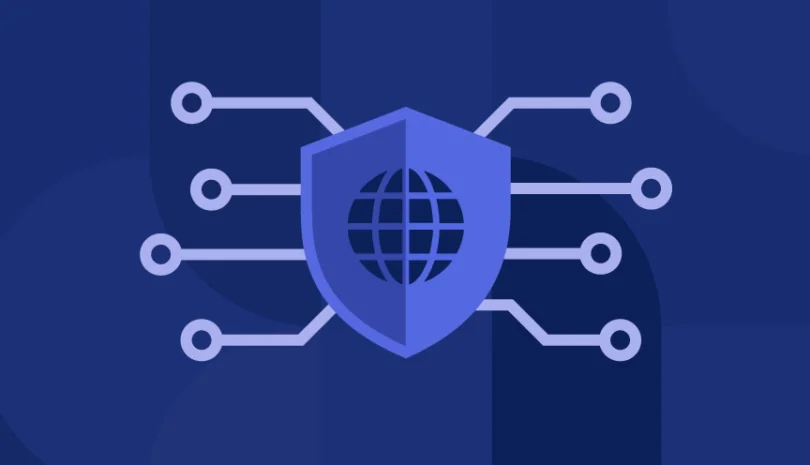The modern enterprise attack surface is bigger and harder to track than ever. Between cloud infrastructure, SaaS applications, remote endpoints, and third-party integrations, security teams are responsible for monitoring a growing web of exposed assets, many of which aren’t even known to IT.
Manual methods like spreadsheets or periodic audits can’t keep up. Threat actors move faster than review cycles, and misconfigurations or vulnerabilities can go unnoticed for weeks or months. That’s why automation has become essential in external attack surface management (ASM) platforms.
By continuously discovering, classifying, and monitoring internet-facing assets, automation gives security teams the real-time visibility they need to prioritize and respond to threats faster. It replaces static inventories with dynamic monitoring, reduces false positives, and helps organizations scale oversight without overloading analysts.
In fact, IBM’s 2025 Threat Intelligence Index found that over 30% of attacks exploited known vulnerabilities or misconfigured systems, issues automation is built to catch.
What Is Attack Surface Management (ASM)?
Attack Surface Management (ASM) is the continuous process of identifying, classifying, and monitoring all digital assets exposed to the internet, whether managed directly by your organization or introduced through third parties. These assets include domains, IP addresses, APIs, SaaS tools, cloud instances, and even forgotten or shadow IT.
The goal of ASM is simple: maintain real-time visibility into what attackers can see and potentially exploit. Traditional vulnerability management often focuses on internal infrastructure, but ASM shifts the lens outward to your external-facing risk.
Effective ASM platforms automate asset discovery, track changes across environments, and flag potential exposures as they emerge. This continuous approach helps security teams proactively manage vulnerabilities, respond to threats faster, and ensure compliance with evolving regulations like DORA, NIS2, and PCI DSS.
In short, ASM enables organizations to monitor what matters most: the security of their digital perimeter, where real-world attacks often begin.
Why Manual Attack Surface Management Platforms Don’t Scale
Manual attack surface management might have worked when digital environments were smaller and slower to change, but that’s no longer the case. The modern attack surface is in constant flux, driven by remote work, cloud-first strategies, rapid software deployment, and a growing ecosystem of third-party tools and services.
As environments expand, asset sprawl becomes inevitable. New domains, APIs, shadow IT, and cloud resources appear faster than teams can document them. Static asset inventories, often tracked in spreadsheets or outdated CMDBs, quickly lose relevance, leaving security teams blind to potential exposures.
Worse, manual processes delay detection and response. By the time a misconfiguration or vulnerable endpoint is discovered, threat actors may have already exploited it. Attackers are becoming more sophisticated, leveraging automation and AI to identify weaknesses in real time. Defending against them with reactive, labor-intensive methods puts organizations at a clear disadvantage.
To keep up, security programs need automation that scales. Real-time visibility, continuous asset discovery, and automated alerting are no longer “nice to have”; they’re essential capabilities for reducing risk and maintaining compliance in a fast-moving threat landscape.
How Automation Transforms Attack Surface Management Platform Capabilities
Manual tools can’t keep pace with the volume, speed, and complexity of today’s external-facing assets. Automation is what enables attack surface management (ASM) platforms to scale, bringing clarity, speed, and accuracy to every layer of risk discovery and response.
From identifying unknown assets to streamlining remediation, automation drives smarter, faster, and more reliable workflows across the entire ASM lifecycle. The following capabilities highlight where automation has the most impact: continuous asset discovery, risk prioritization, real-time alerting, third-party visibility, and compliance readiness.
Continuous Discovery and Asset Inventory
Automation enables continuous discovery of external-facing assets, domains, subdomains, IPs, SaaS services, APIs, and cloud infrastructure. This eliminates reliance on outdated spreadsheets or static CMDBs and ensures that newly created or forgotten assets are detected in real time. With the attack surface constantly shifting due to business growth and digital transformation, continuous discovery helps maintain a dynamic and accurate asset inventory. This visibility is foundational for any effective attack surface management strategy, allowing security teams to spot unauthorized services, shadow IT, or exposed assets before attackers do.
Risk Prioritization and Vulnerability Contextualization
Attack surface management platforms equipped with automation don’t just detect exposures; they help prioritize them intelligently. By correlating known vulnerabilities (CVEs), asset sensitivity, and exploit likelihood, platforms can assign contextual risk scores to exposed assets. This reduces alert fatigue and helps security teams focus on the threats that matter most. Instead of reacting to every issue equally, organizations can triage based on actual business impact. Automated enrichment ensures that findings are not only timely but also actionable, fueling smarter remediation workflows and reducing mean time to resolution across large, complex environments.
Real-Time Alerting and Monitoring
The attack surface changes constantly, and detection must keep pace. Automated monitoring flags exposures like open ports, misconfigured services, or expired TLS certificates the moment they appear. These alerts are triggered in real time and integrated directly into SIEM or SOAR platforms for immediate response. Instead of relying on periodic scans, organizations gain a live feed of their external risk posture, enabling rapid triage and automated remediation workflows. Whether a shadow IT asset is spun up or a vendor’s system is compromised, real-time alerting ensures your team can act before threats escalate.
Third-Party and Supply Chain Visibility
Third-party risk is an integral part of external attack surface management. Automated platforms extend discovery and monitoring to your vendors’ assets, mapping connections between their systems and your environment. This creates visibility into otherwise hidden exposures, such as misconfigured SaaS accounts or insecure APIs. With supply chain attacks on the rise, understanding how vendor vulnerabilities impact your organization is crucial. Automation allows for ongoing discovery and scoring of third-party assets, enabling proactive security reviews and faster incident response when a supplier’s security posture changes unexpectedly.
Compliance and Audit Readiness
Meeting regulatory requirements means more than checking boxes; it demands continuous documentation and evidence. Automated ASM platforms help generate and maintain up-to-date logs, asset inventories, and risk assessments required for frameworks like DORA, NIS2, PCI DSS, and ISO 27001. Instead of scrambling during audits, organizations can produce compliance reports on demand, backed by live data. Automation ensures that every change in your external environment is recorded and contextualized. This simplifies regulatory alignment and builds trust with customers, auditors, and stakeholders, demonstrating that your organization takes proactive, ongoing action to manage digital risk.
Benefits of Automation in Attack Surface Management Platforms
Automating attack surface management delivers significant benefits that go far beyond speed. First, it drastically reduces manual workload and analyst fatigue by eliminating the need for repetitive discovery and validation tasks. Instead of chasing spreadsheets and running one-off scans, security teams gain always-on visibility across their external ecosystem.
Automation also improves time-to-detection and time-to-remediation. Real-time alerts, integrated workflows, and contextual risk scoring mean exposures can be identified and addressed faster, minimizing the window of opportunity for attackers.
With continuous asset discovery, organizations build more accurate and complete inventories, including previously unknown or shadow IT assets. This comprehensive visibility is essential for reducing blind spots and maintaining a defensible security posture.
Critically, automation enables scalability. Whether you’re managing a global footprint or hundreds of vendors, automated ASM platforms adapt without added headcount or complexity.
Finally, automation supports strategic initiatives like continuous security and zero trust. These models require real-time data and adaptive controls, exactly what automated ASM delivers. By integrating automation into your external risk workflows, you shift from reactive response to proactive resilience.
Considerations When Choosing an Automated Attack Surface Management Platform
Not all attack surface management platforms are created equal. As automation becomes standard, selecting the right solution requires balancing depth of visibility, workflow integration, and usability.
Start by evaluating coverage. An effective platform should span cloud, hybrid, and on-premises environments, including shadow IT, SaaS applications, APIs, and externally exposed assets. Partial visibility creates blind spots, which attackers will exploit.
Next, assess integration capabilities. Strong ASM platforms seamlessly connect with CMDBs, SIEMs, vulnerability scanners, and ticketing tools. This interoperability allows for real-time data flow, efficient remediation, and unified reporting across your security stack.
Customizable automation workflows are another key differentiator. Look for tools that allow you to define triggers, set thresholds, and tailor alerting to your risk tolerance and operational capacity. Off-the-shelf alerts without context can generate noise and fatigue.
Ease of use also matters. Security teams need a platform that is intuitive enough for rapid adoption but deep enough to support forensic analysis and technical troubleshooting. A clean UI with strong documentation can speed up time-to-value.
Finally, evaluate the platform’s alignment with regulatory frameworks. Built-in support for standards like DORA, NIS2, PCI DSS, and ISO 27001 can streamline compliance and audit readiness while reducing manual effort.
Effective Attack Surface Management Platform Automation
In 2025, automation isn’t just a nice-to-have; it’s the foundation of effective attack surface management. As digital environments grow more complex, manual methods can no longer keep up with the volume and velocity of emerging risks. ASM platforms that leverage automation empower security teams to proactively detect exposures, prioritize threats, and accelerate remediation across cloud, SaaS, and third-party ecosystems.
Rather than chasing alerts or maintaining static inventories, automated ASM gives you continuous visibility into your external-facing assets, enabling your team to move from reactive firefighting to strategic risk reduction.
If your current approach leaves gaps in coverage or slows response times, it’s time to re-evaluate. A platform like Panorays delivers continuous, intelligent monitoring of your attack surface with built-in automation, contextual risk scoring, and third-party visibility.
Book a personalized demo with Panorays to see how automation can elevate your external attack surface management strategy.
Attack Surface Management Platform Automation FAQs
-
Automation enables real-time discovery of external-facing assets, continuous risk scoring, vulnerability contextualization, and alerting for suspicious exposures. Many platforms also automate policy enforcement, compliance documentation, and integration with SIEM or SOAR tools for faster remediation.
-
Yes. One of the biggest advantages of automation is its ability to uncover previously unknown domains, subdomains, SaaS applications, APIs, and cloud services. These shadow assets often pose significant risk because they fall outside of traditional IT oversight.
-
Automated platforms help maintain up-to-date asset inventories, generate audit-ready reports, and track compliance across standards like ISO 27001, DORA, and NIS2. They reduce manual errors and provide a defensible compliance posture through consistent logging and monitoring.
-
Begin by assessing your current asset visibility and response capabilities. Identify gaps, then explore platforms like Panorays that deliver end-to-end automation, contextual risk insights, and third-party integration. Book a personalized demo with Panorays to see how it works.



